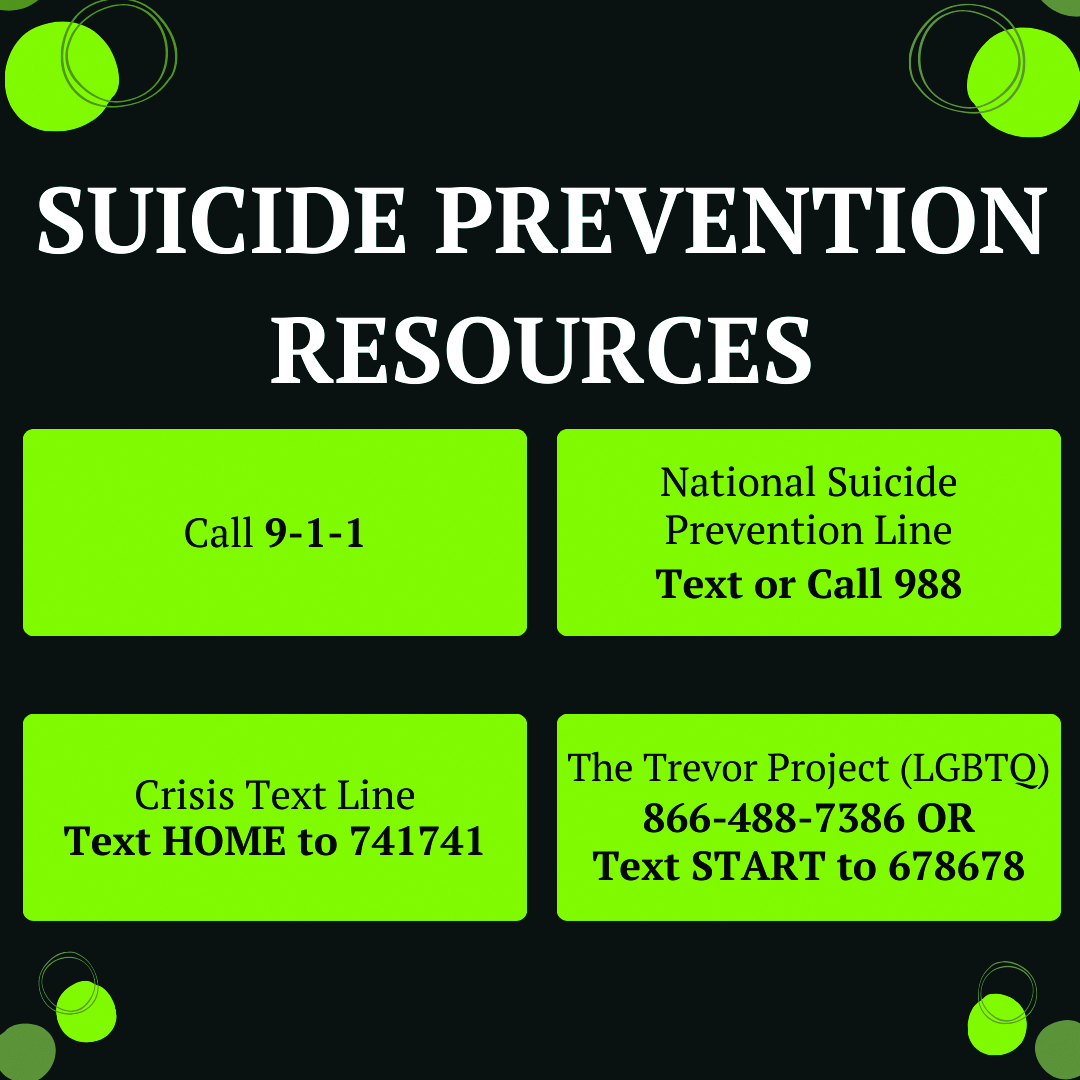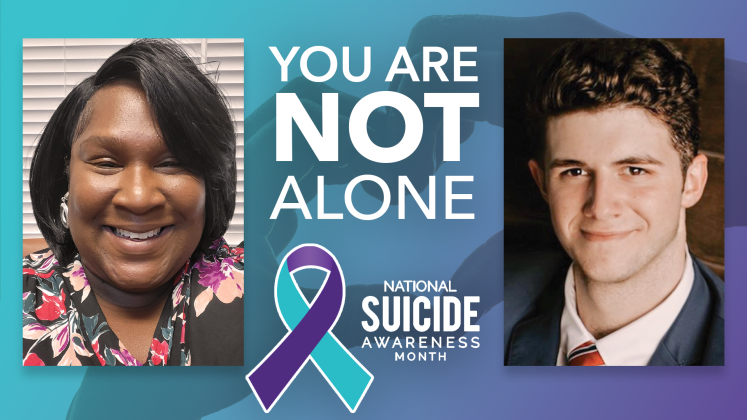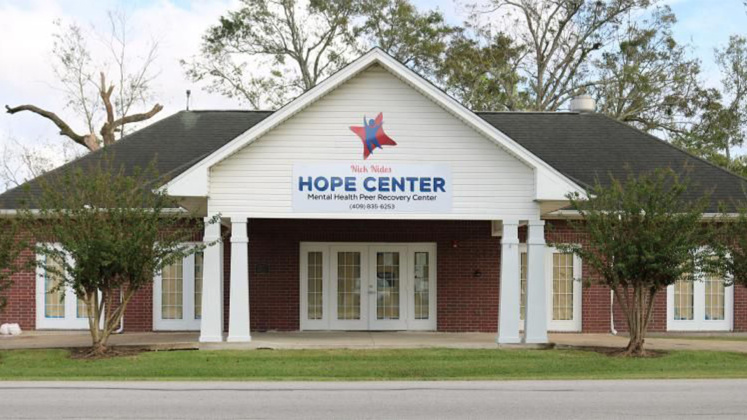
.
In the realm of human experience, few subjects are as delicate, heartwrenching, and vital to address as suicide. Which is why, perhaps, the entire month of September is set aside for suicide awareness.
Beyond the statistics and headlines are intricate stories of people grappling with unbearable pain, despair and hopelessness. To confront this crisis, the community is asked to shine a compassionate light on the shadows of suicide, seeking a deeper understanding for the pathways to prevention and support.
For the last two and a half years, Andria Liedy, a Beaumont mother of three, has served as The Hope Center coordinator at Spindletop, spending her days intaking residents, discussing client’s goals and needs, and ensuring them that, as someone who has been in their shoes, they are not walking alone. The Hope Center is a peer-managed mental health facility in Beaumont, priding itself on being a safe place where people can gather, share stories, and seek positive change.
Liedy’s road to making a difference at Spindletop was paved in pain, rejection and many life lessons that she now shares with others in the hope of reaching the hopeless.
“Most of my life, I’ve struggled with my mental health, and mental health was not something that was acknowledged in my family,” said Liedy. “My parents only knew church, work and home; so that’s all I knew.”
Liedy shared details of the first time she found herself in a mental health hospital.
“I was 12-years-old and I tried to commit suicide by swallowing several bottles of Tylenol,” she shared. After being rushed to the hospital, Liedy was scared she was going to be arrested because the police had arrived to question her. “They asked me why I took the pills, and I told them: I just didn’t feel like I belonged or that I fit in. Everywhere I went it just seemed like I was different.”
In an attempt to fit in, she found herself in the middle of what she described as the wrong crowd.
“I joined a gang and started getting into fights with adults; it was a rough time.”
A few years after meeting who she believed was the man of her dreams, at only 17, Liedy married, and recalled her big day being the beginning of the end of her marriage and the start of a downward spiral.
“Literally, as soon as I said, ‘I do,’ things changed. He slapped me in my face that day,” she said of what she termed as the beginning of a four-year cycle of abuse that led her to begin self-mutilating and multiple attempts at suicide. “Between the ages of 25 and 32, I had 32 stays at the mental health hospital, and was struggling to keep it together.”
A convincing co-worker led her to sample illicit drugs at a local nightclub, which turned into a cocaine addiction. Eventually, Liedy began searching for answers online and in books, hoping to find the answer to her problems.
“I began researching dual diagnosis, and realized that was what I was fighting, a mental health problem and addiction simultaneously,” Liedy said.
Now divorced and seeking solace in a man she thought was a confidante, Liedy would again find herself amid calamity, sexually assaulted and pregnant on top of her mental health and drug issues. Liedy entered a treatment facility once again, and after two months of inpatient mental health treatment, Liedy proceeded to a substance abuse facility in Houston — one that typically comes with a substantial price tag.
“I called my parents to let them know where I was and that I was going to need help paying to stay at the facility, but the director told me to put that phone down, and that God told her I belonged there and not to charge me anything,” she shared. “I stayed through the duration and learned so much in those six months.”
Liedy attended Celebrate Recovery meetings, Narcotics Anonymous, Alcoholics Anonymous, and took full advantage of every resource she could find during her stay.
“I was getting ready to go home and I had heard so many times that I had to change ‘people, places, and things’ that I used to associate with during my addiction, but it wasn’t realistic, I couldn’t change all of those things. I had to go back to the projects,” she said. For the first three weeks, the same drug dealer came to her door. “I told him ‘No, that’s not me anymore,’ but he kept coming back and, since he wanted to be bold with me, I was bold with him!”
Every time the drug dealer would return, Liedy prayed aloud for him and asked God to touch that man and call him to salvation: “He never came back after that.”
Liedy began volunteering for Christian Women’s Job Corps and, a year later, was employed as a coordinator with the organization and began teaching classes to people who found themselves in crisis situations she was able to relate to.
“I was able to help my family understand the importance of mental health support, and I was able to be that resource for my children that I didn’t have growing up,” she said. “Each and every day is such a joy. We all have our ups and downs because we all go through things, and even today I still have mental health struggles, but I’m able to stay well because I’m using the tools that I have learned over the years.
“I’ve been clean from drugs since 2012 and I’ve decided that I’ve got to do positive things to release my pain and keep myself busy to stay focused and a priority.”
Liedy said that while it was hard, she believes her past got her to her purpose today, and where God intended her to serve. Through her struggles and victories alike, Liedy remains resilient in her efforts to heal and continues to boldly share her story as a face of the fight against suicide.
She is not alone in that quest, and a young man from a very different journey shares that mental illness is no respector of race, gender, or age.
Local real estate agent, 20-year-old Haden Young, seems to have the perfect life from the outside looking in. Having finished high school early with his real estate license and serving as a junior consultant with the KMY Consulting firm, Young’s resume is impressive, but he says life has been far from a walk in a West End park.
“I was 15 the first time I thought about taking my own life,” Young revealed. “I had a lot of problems and a razor blade – I didn’t tell anyone about that for a very long time.”
Young was diagnosed with severe anxiety disorder during his junior year of high school, and amidst a heavy load of college classes and planning for the future, his mental health suffered.
“Instagram was the big thing when I was younger; everything was perfectly photoshopped, and then along came TikTok. These apps will cause you to compare yourself to the best version of everyone else, but it’s not real,” said Young. “I had to limit my time on social media.”
Over time, he learned his triggers and has found coping skills through trial and error.
“I was always a nervous and sensitive kid, which came to fruition in high school when I had to seek medical help for my mental health,” said Young. “I’ve hit rock bottoms with depression, but I was able to get the proper medication and figure out what worked best for me.”
Young said that, while he’s always been privileged to have an open relationship with his parents and friends that encouraged discussion regarding mental health, he’s had a tough time relating to others.
“I was working full-time at 18 when I moved out on my own into my first apartment, and everyone I work with is in their 30s and 40s with families and kids, so sometimes it is a challenge finding people to relate to,” he shared. “Not too long ago, things were all going wrong and I was in a horrible episode. I had wrecked my dream car and I wanted to end it all.
“I slit my wrist, but my mom found me and helped save my life that day.”
Young says he and his friends are like open books, and he hopes the right readers find comfort in sharing in his experience.
“I can’t even count on both hands the number of people I know who have tried to take their own lives,” Young said of something that impacts more people than some might think.
Young continues his highly-driven path to success, working toward his Masters in marketing through Arizona State and advancing his real estate profile, not the stereotypical face of the battle against depressive anxiety. He also makes time to give back to the community, inspiring and assisting with West Brook High School implementing a real estate program this year as part of their career and technical education curriculum. With the use of proper medication and therapy, Young continues to fight.
“If we keep educating ourselves and maintaining a healthy dialogue, we can make a real difference,” Young said as he boldly shared his story as a face of the fight against suicide.
Residents of Southeast Texas can turn to organizations and crisis hotlines specializing in mental health emergencies, providing immediate assistance and a compassionate ear to those in distress, as the region is home to numerous mental health facilities, clinics and professionals offering therapeutic services for individuals dealing with suicidal thoughts or other mental health issues.
“When a person is contemplating suicide, they think this moment is forever, but that is not true,” said local Licensed Professional Counselor Morgan A. Turner. “Tomorrow can bring change, and it’s okay to ask for help.”
In 2021, The Center for Disease Control (CDC) reported that nearly 44% of high school students experienced persistent feelings of sadness or hopelessness. In addition, the second leading cause of death among youth ages 12-24 is suicide. In the last two years alone, Samaritan’s Wellness Program, a division within local nonprofit counseling organization Samaritan’s Counseling Center of SETX, identified six students in need of immediate psychiatric care due to an intent to harm themselves. These six young lives, in addition to the 554 other children who considered or attempted suicide, are vital pieces of the Southeast Texas community that could have been forever lost if not for Samaritan’s schoolbased mental health program.
Although many local and national resources exist, being able to relate to someone with similar life experiences is often crucial for those contemplating suicide. Said relationships exist at Spindletop Hope Center, where individuals such as Liedy wait to welcome those in need with open arms.
“A lot of people have lost hope and try to take their lives in the midst of waiting; but, we can waste our whole lives looking and waiting for something that isn’t coming, so we stay broken and sick,” Liedy explained. “You have to do it for yourself, but we are here to help,.”
If you or someone you know is in crisis, please seek help immediately.



